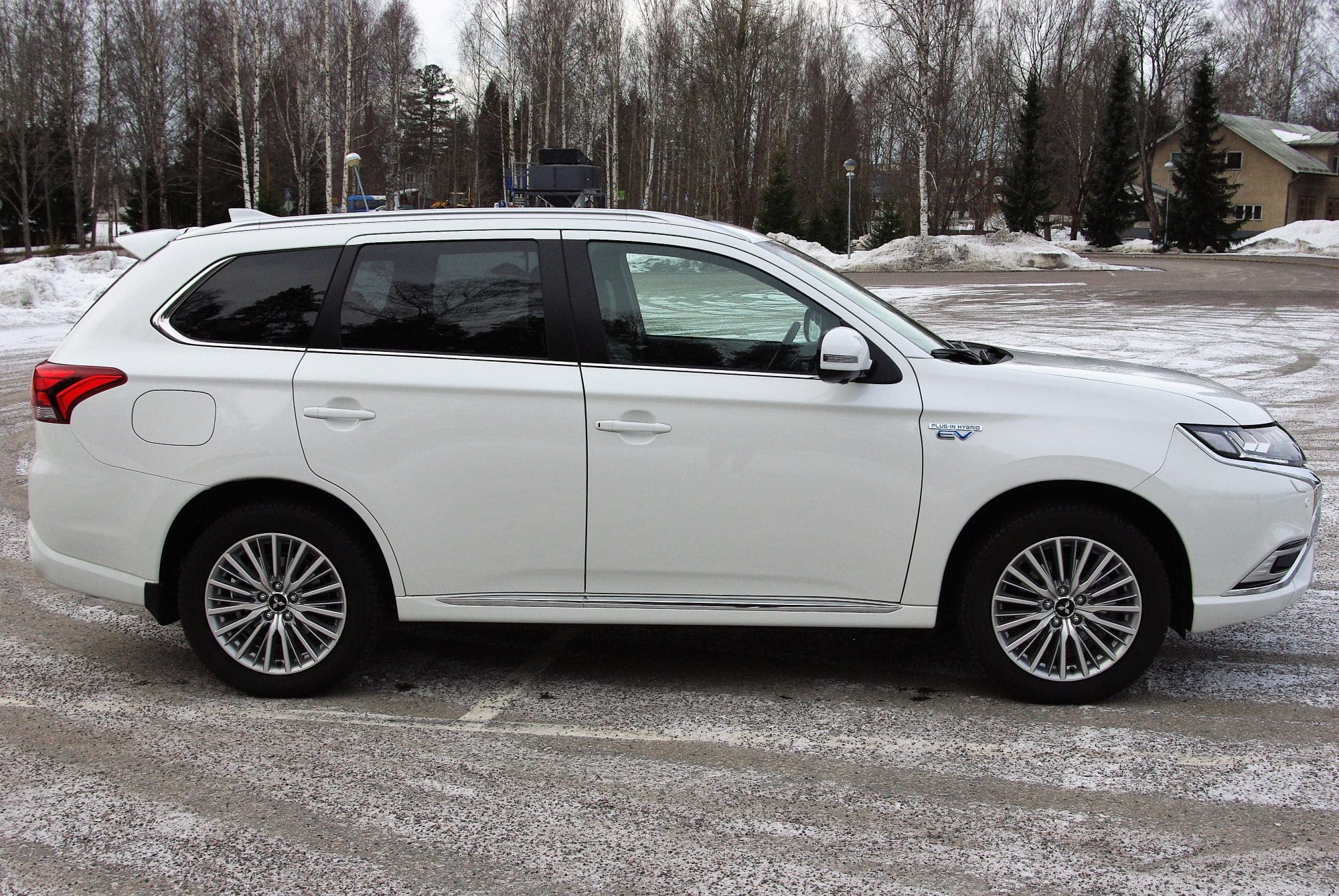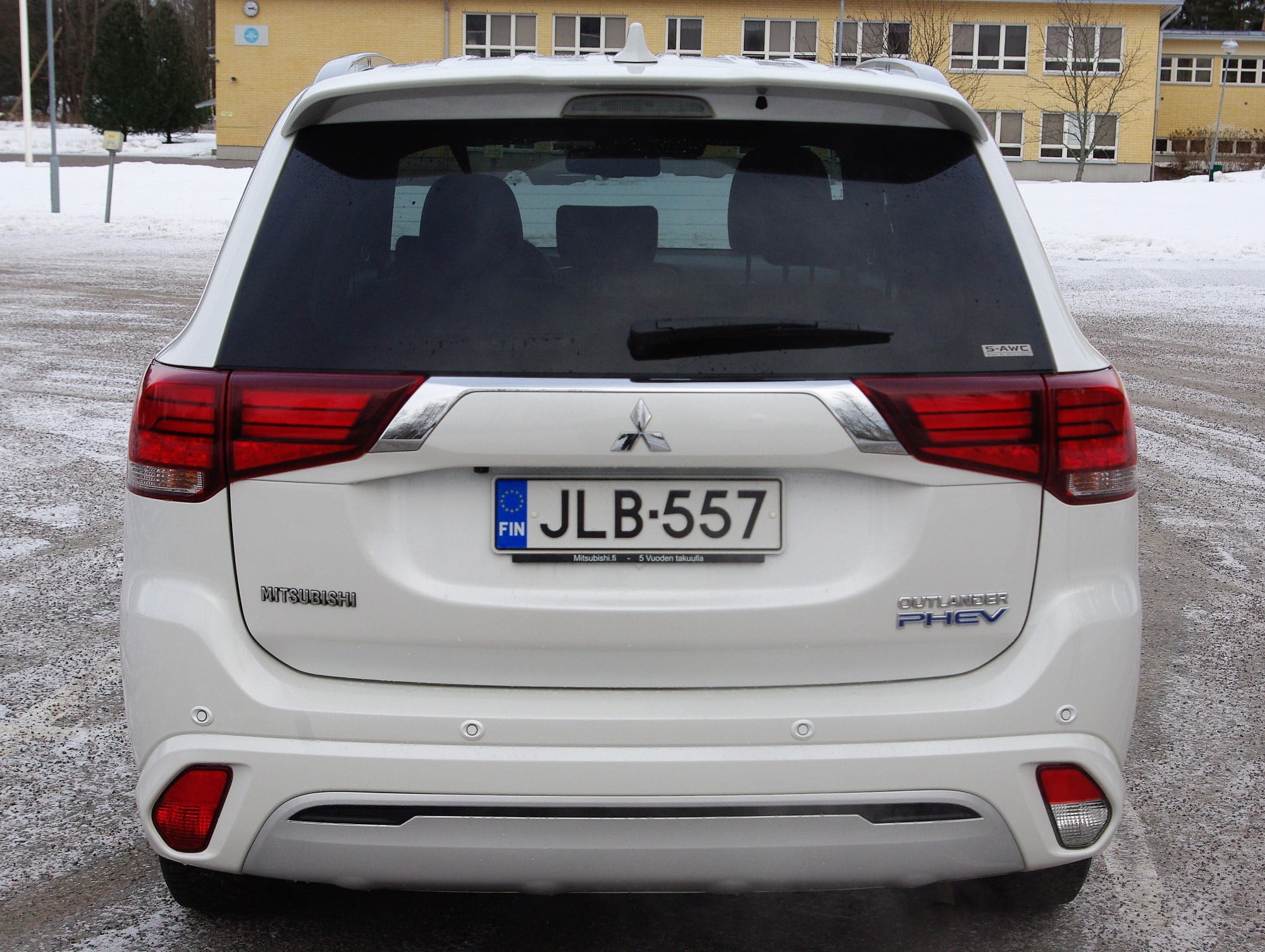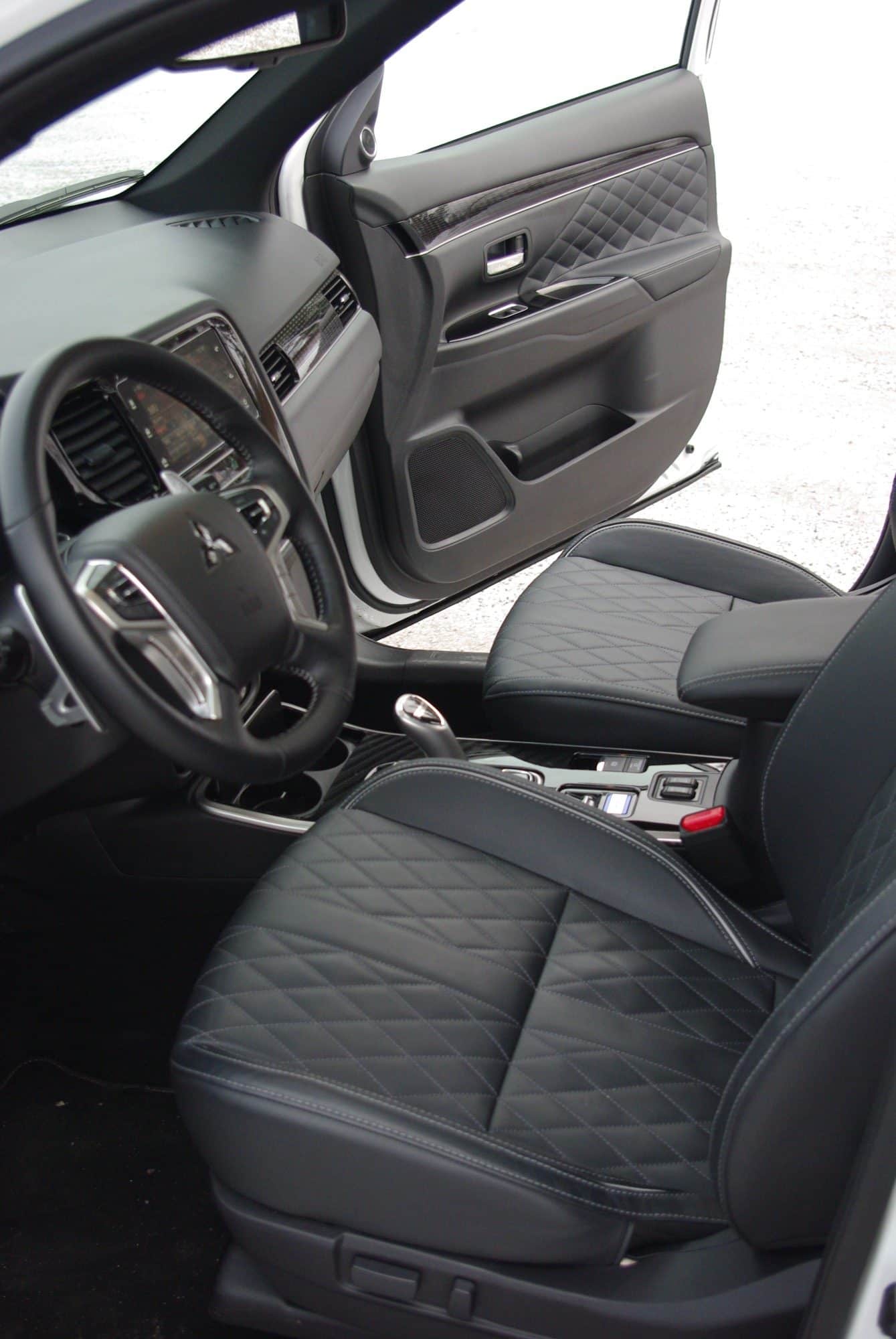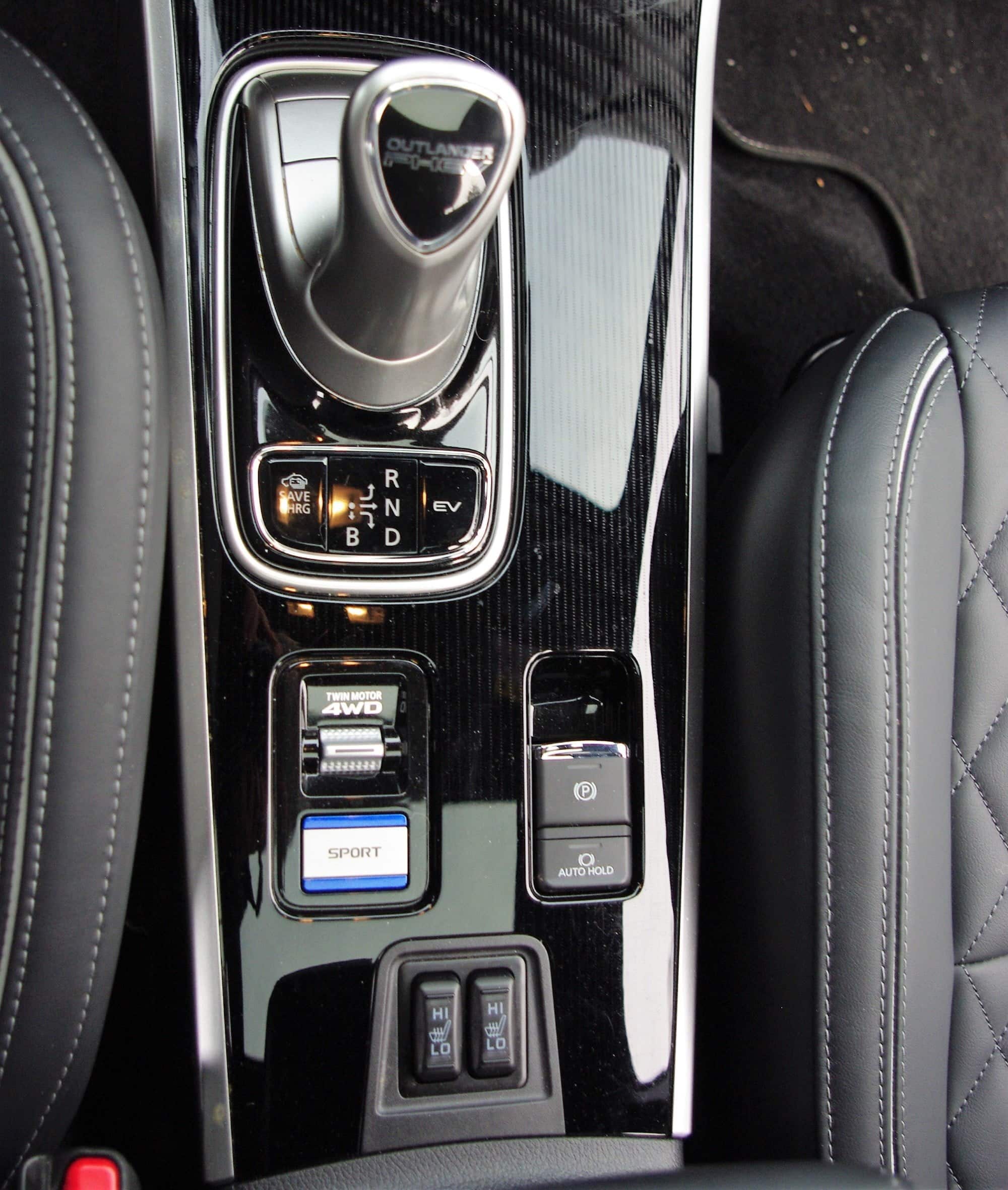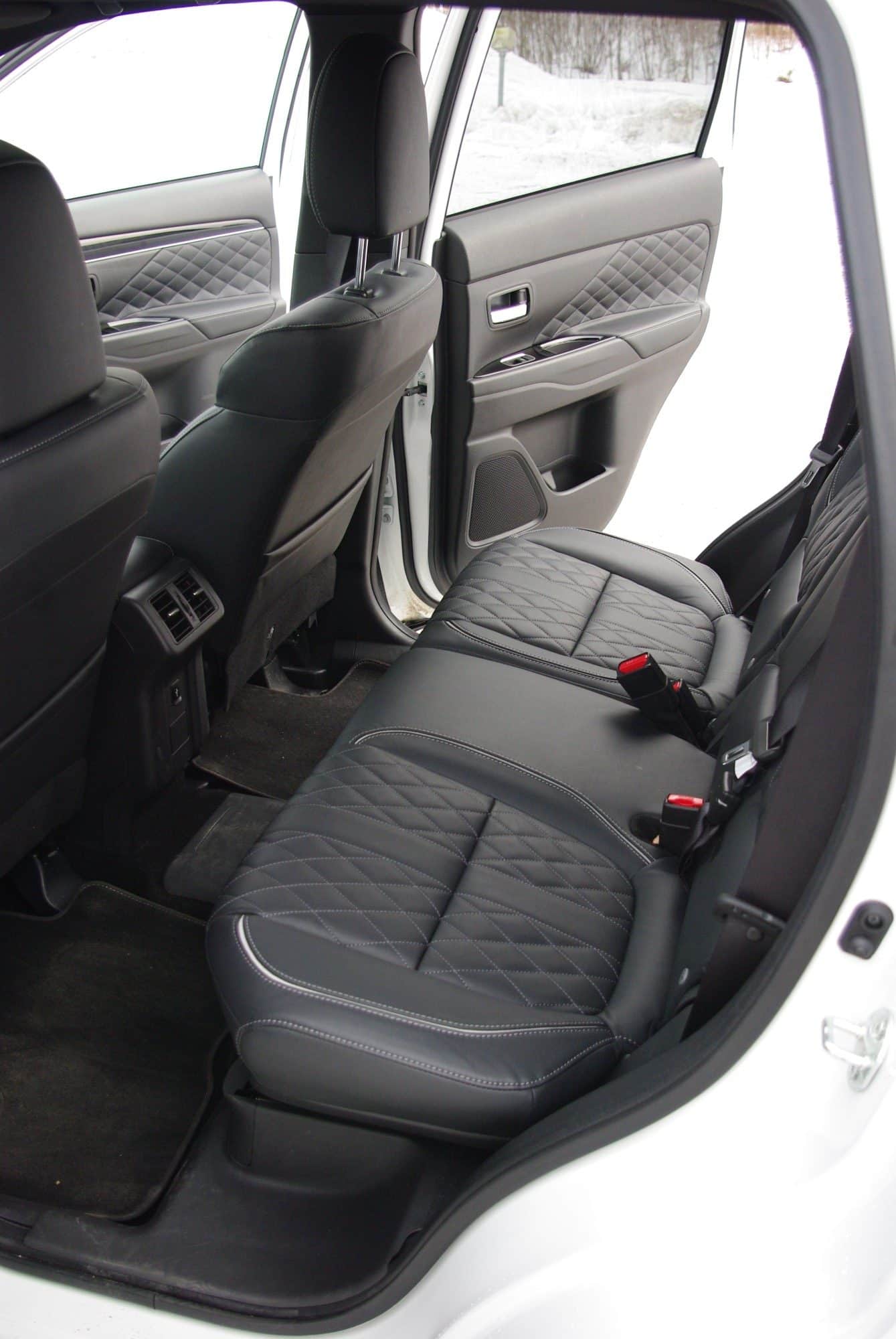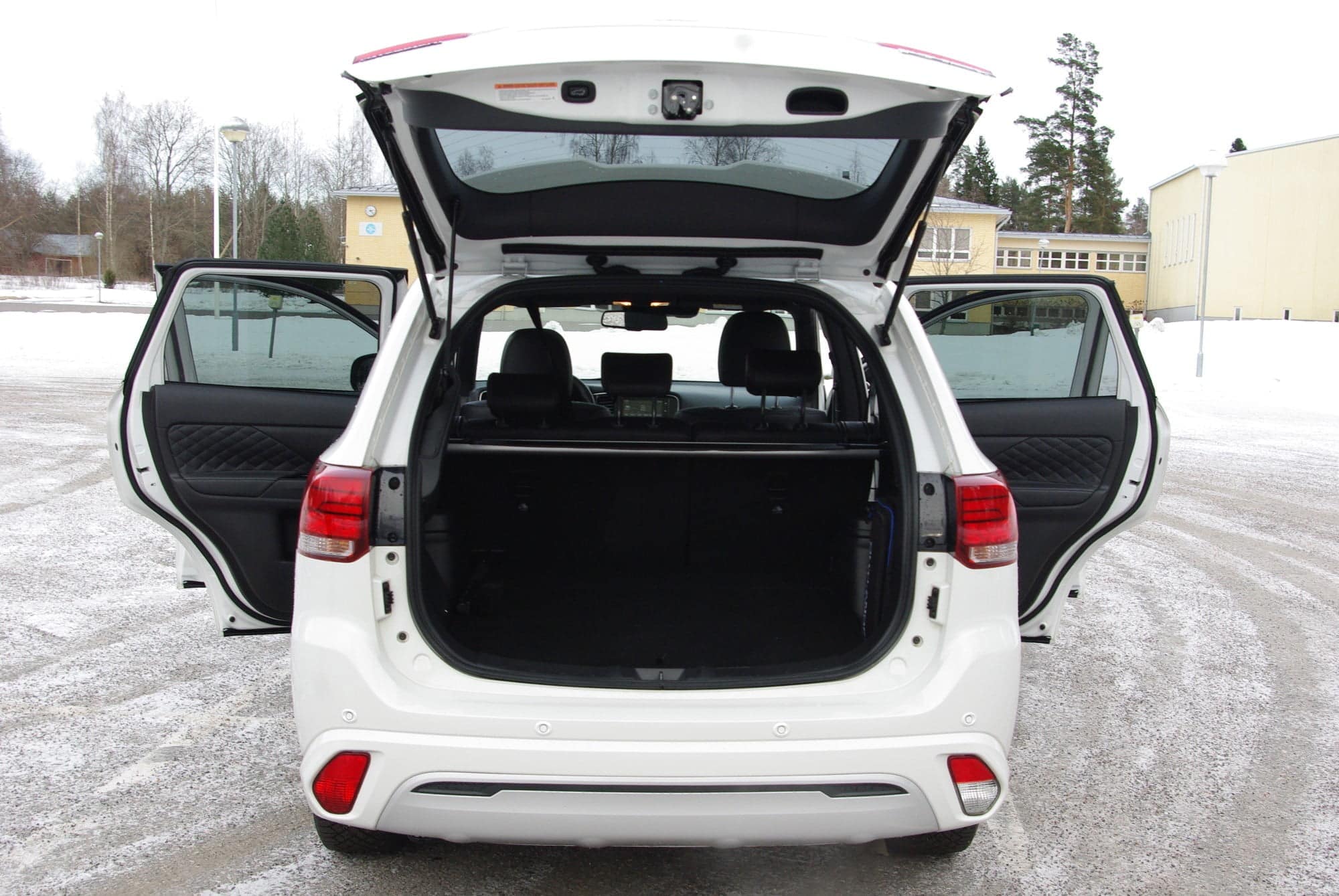Test drive and text by Juuso Marttila
Mitsubishi Outlander PHEV is a car that offers good SUV features and environmentally friendly driving at a competitive price. Of course, during the test drive we did find some shortcomings.
The original Outlander model, then called Airtrek, was launched back in 2001. In 2012, Mitsubishi launched the first Outlander plug-in hybrid model, the Outlander PHEV. Now we can test drive the new 2019 Outlander PHEV. Externally, the 2019 model is not very different from its predecessors. The interior hasn’t been updated from last year either.
The Outlander’s biggest update is a new 2.4-litre petrol engine and a 13.8 kWh battery. These make 135bhp from the petrol engine, 82bhp from the front electric motor and 95bhp from the rear electric motor, so there’s no worry about being underfoot. There’s also an impressive 211 Nm 137 Nm and 195 Nm of torque.
The interior does not match the price range
When sitting in the car, the glossy plastic trim on the dashboard and centre console catches the eye. They do not create the feel of a premium SUV, as Mitsubishi advertises.
The gear selector is downright ugly, covered in grey plastic and looking like a toy. The controls seem confusing and awkward to use. Interpretation of the instrument cluster may also require many people to consult the manual.
Stylish dartboards on the black leather seats do little to rescue an otherwise unsuccessful interior.

Functional powertrain and steering system
When I set off, the shortcomings of the interior are forgotten. The petrol and electric engines work well together, making acceleration smooth and meaningful.
The smooth pull and responsiveness of the acceleration is due to Mitsubishi’s original powertrain. It consists of a four-wheel drive with an electric motor mounted on two different axles and S-AWC (Super All Wheel Control) steering.
The power distribution of the four-wheel drive can also be monitored from the instrument panel if desired.
The new Outlander has three driving modes: basic driving, snow mode and lock mode. In base driving mode, the car is almost front-wheel drive and power is distributed as required.
In snow mode, power is transferred more to the rear tyres.
Locked mode simulates the locking of the centre-pivot wheel. It improves traction and stability by distributing torque evenly to all wheels.
In addition to the three driving modes, Sport mode is activated by a separate button below the gear selector, allowing you to unleash all the power and maximum performance. Full electric mode is activated by the adjacent EV button.
Battery performance below expectations
In full electric mode, Mitsubishi promises a maximum range of 45 kilometres. I charge the battery with 10A of current, which takes about five and a half hours.
I decide to test the 45 km maximum range. My odometer reads 33 kilometres when the car says the battery is flat.
So the Outlander is about 10 kilometres short of the promised 45 kilometres, with the outside temperature a couple of degrees above zero.
However, the range is sufficient for a journey to work in the metropolitan area, for example, if there is a possibility to recharge the battery at work during the working day. The battery can be charged with a lower current of 8 A, which extends the charging time to around seven hours.
The Outlander has a fast charge function, which can achieve an 80% charge in around half an hour. Fast charging points are not yet available on every corner and cost €0.22/minute to charge. For the price and the shortage of charging points, it is worth leaving fast charging to full electric cars.
In hydride mode, the battery has enough charge for around 400 km and can be topped up using the save/charge button below the gear selector.
In save mode, the car saves battery power and in charge mode it recharges the battery using the engine and braking energy.
This increases fuel consumption considerably. Driving with a petrol engine alone, consumption rises to more than nine litres per 100 km.
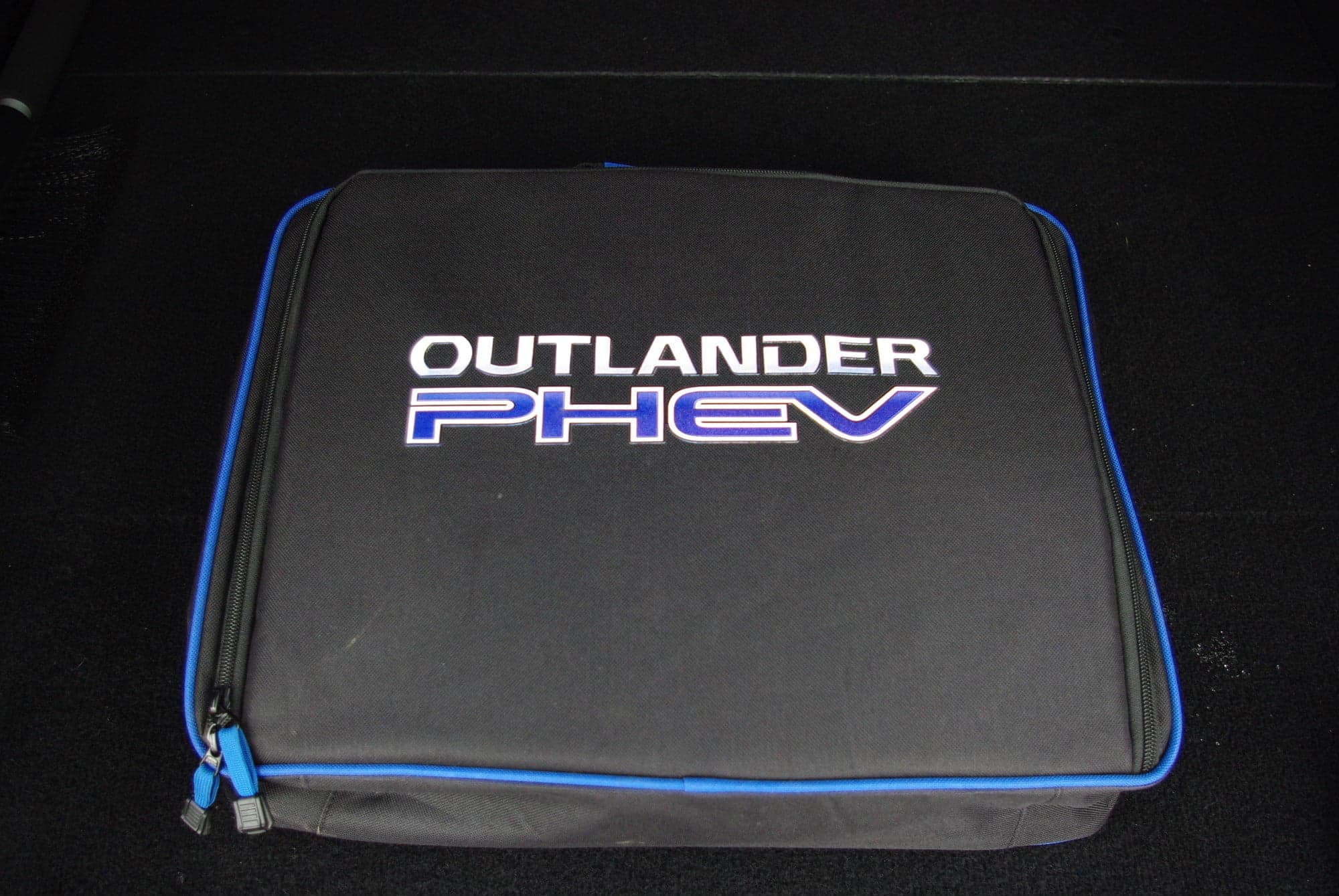
Agile but a little unstable to drive
When driving in the countryside, the steering is quite responsive and the car feels stable and safe on snow and ice thanks to the four-wheel drive.
However, once on the motorway, I find that the steering is a bit imprecise and the wheel is constantly turning, even on a straight road.
There are other problems on the motorway. Gusts of wind are very sensitive to the car, which is clearly felt in the steering. Also, road noise increases considerably on the motorway, but remains reasonable when the sunroof is closed.
Despite its large size, however, the Outlander is surprisingly nimble in tight spaces. Its large mirrors and standard reversing camera make parking easy.
In terms of space, the Outlander meets all the expectations of an SUV. There’s plenty of legroom in both the front and rear seats, and sitting in the back you could almost be forgiven for thinking you were sitting on a living room sofa.
With 463 litres of boot space (453 litres in the Instyle and Instyle sport models), it’s easily big enough for the whole family.
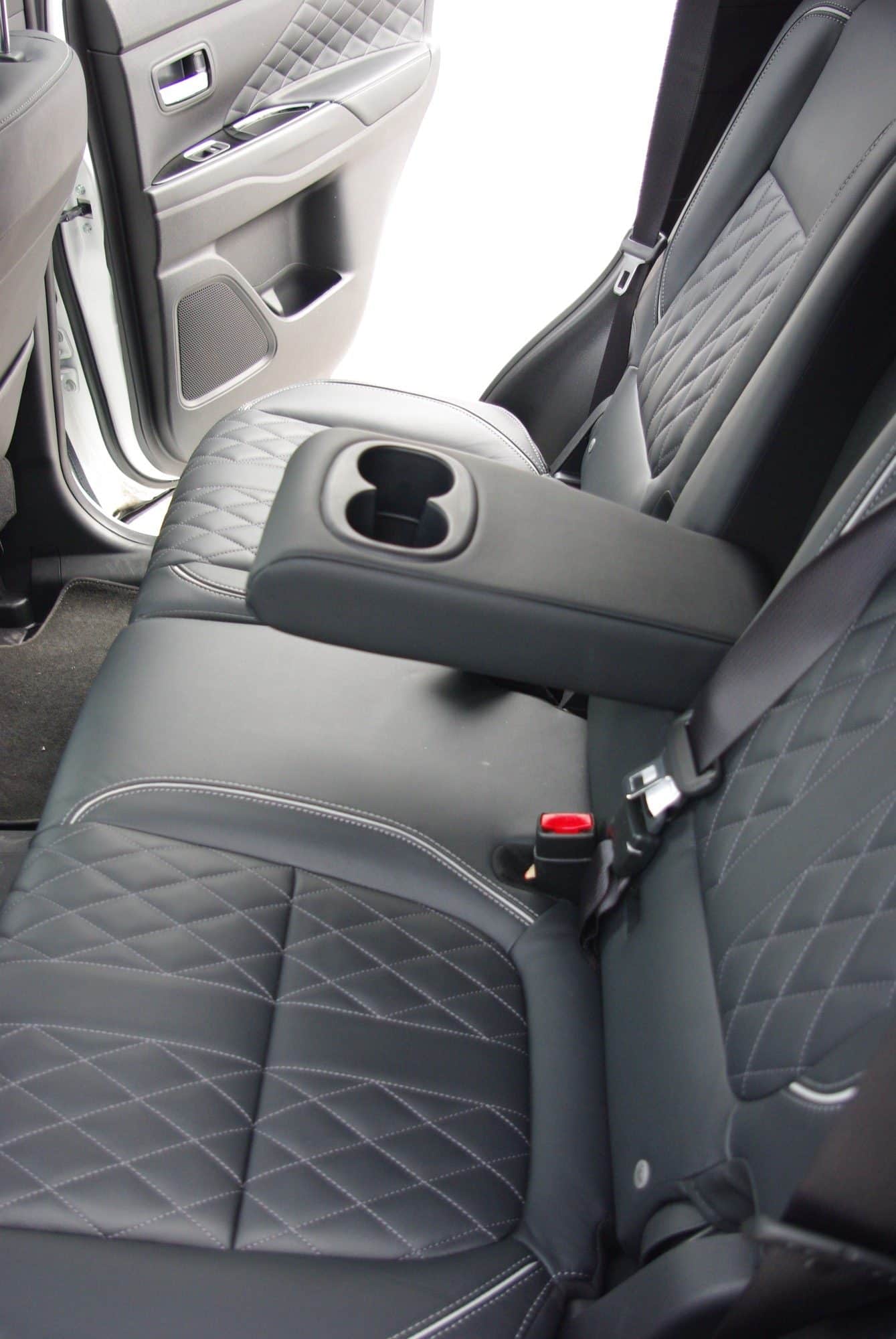
Comprehensive equipment as standard
The comprehensive standard equipment includes a power tailgate, touchscreen audio system, semi-leather upholstery, tinted rear windows and a heated steering wheel.
The only drawback is the lack of a centre seat backrest ski hatch, as the centre seat cannot be folded down individually either.
There are many other optional extras available with the equipment packages, such as active cruise control and lane departure warning.
The low tax rate for hybrids means that the optional equipment is cheaper than in other cars, and the car tax is less than €2,000. However, equipment packages can increase the starting price of €43,000 by up to €10,000.
In any case, the price will be considerably lower than that of the competition, as even a rechargeable hybrid car will not be available for €43 000.
The Outlander PHEV has indeed gained a great deal of popularity around the world by creating its own group of cars in which there is hardly any competition.
The Mitsubishi Outlander PHEV is a car for people who want to save the environment and can still work with a relatively limited charging network, but need a reasonably off-road capable and spacious SUV without investing a fortune in a car.

Dimensions
length 4695 mm / Width 1800 mm / Height 1710 mm / Wheelbase 2670 mm
Ground clearance
185 mm
Luggage compartment
463/453 litres
Engine
2.4 l petrol engine 2 electric motors
Power
Petrol engine 99 kW (135 hp), Front electric motor 60 kW (82 hp), Rear electric motor 70 kW (95 hp)
Torque
211 Nm petrol engine, 137 Nm front electric engine, 195 Nm rear electric engine
Traction
four-wheel drive
Traction
1500 kg (with brakes)
Acceleration 0-100 km/h
10.5 seconds
Top speed
170 km/h (135 km/h in full electric mode)
Fuel consumption
0 l/100 km on full electric, 2 l/100 km combined, 9.5 l/100 km on empty battery
Range
45 km
CO2 emissions
46 g/km
Price
from €43 473, with test drive equipment €53 750.

